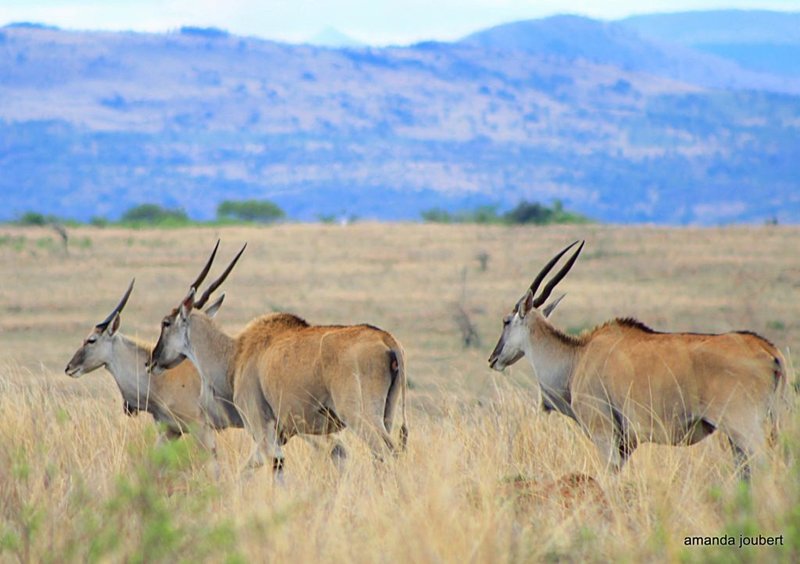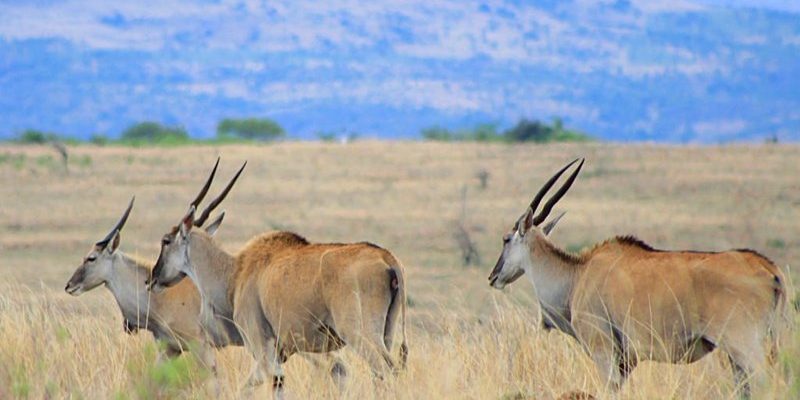
The Giant Eland is a fascinating creature, often regarded as the largest antelope species in the world. Imagine a graceful giant moving effortlessly across the African plains—it’s a sight that captivates anyone who sets eyes on it. With its impressive size and magnificent spiral horns, the Giant Eland isn’t just a majestic animal; it’s a symbol of the wild beauty of Africa.
But there’s more to this animal than just looks. The Giant Eland has a unique place in its ecosystem, showcasing a blend of grace and strength. They often roam in herds, providing a sense of community and safety as they navigate through their habitats. You might wonder, what do these elegant giants eat? Where do they live? Let’s dive into the amazing world of the Giant Eland and uncover the details that make this animal truly extraordinary.
Physical Characteristics
The Giant Eland is massive, with males weighing up to 1,100 pounds and standing about 4 to 6 feet tall at the shoulder. This makes them quite a sight, especially when you spot them in their natural habitat! Their bodies are a light brown to gray color, adorned with white markings that can sometimes look like a work of art. One of their standout features is their long, spiraled horns, which can reach lengths of up to 4 feet. These horns are not just for show; they play a crucial role in dominance displays and mating rituals.
Females are generally smaller and do not have the impressive horns that the males do. Instead, they display a more subtle elegance, often seen with a lighter frame and a gentler demeanor. Their coat helps them blend into the savannahs and woodlands, providing a necessary camouflage against potential predators. Isn’t it fascinating how nature equips animals with such distinctive traits for survival?
Their large, expressive eyes are another captivating feature. These eyes help them detect predators from a distance, giving them time to react and flee if necessary. The Giant Eland’s keen senses are essential for survival, allowing them to thrive in the wild where danger often lurks.
Habitat and Distribution
Giant Elands primarily inhabit the savannahs and grasslands of Central and West Africa. They enjoy areas where savannah meets woodland, providing both grazing opportunities and cover from predators. Habitat is critical for their survival, as they depend on open landscapes for foraging and wooded areas for shelter. Interestingly, they are often found in smaller herds, sometimes mixing with other species, which shows their adaptability to different environments.
These animals are also surprisingly versatile when it comes to their roaming patterns. They can travel great distances in search of food and water, especially during the dry seasons. The ability to migrate is vital for their survival, enabling them to escape harsh conditions while seeking out greener pastures. You may even spot them near watering holes, where they gather in groups to drink and socialize!
Their wide distribution across various terrains showcases their resilience, but it’s essential to understand that they are still vulnerable to habitat loss due to human encroachment. As you contemplate the beauty of the Giant Eland, consider what we can do to protect their natural habitats. Conservation efforts are crucial for ensuring these magnificent creatures continue to roam their lands.
Diet and Feeding Habits
The Giant Eland is a herbivore, mainly grazing on grasses and leaves. Their strong, agile bodies allow them to reach high branches, making them adept at feeding in the trees. This versatility in diet helps them adapt to varying conditions, as they can survive on different types of vegetation depending on their habitat.
Interestingly, they have a unique feeding strategy. They use their long, flexible tongues to grasp leaves and other foliage, allowing them to choose the best parts of the plants. These animals are also known to consume fruits and even barks when their preferred feed is scarce. It’s a fascinating look into how these creatures have evolved to thrive in their environments.
In the wild, you might observe them grazing peacefully in herds. This social behavior is not just for companionship; it also provides safety in numbers against predators. When one member senses danger, the entire group can quickly react to flee or find cover. This dynamic reflects the importance of community in the animal kingdom, particularly for the Giant Eland.
Behavior and Social Structure
The social structure of Giant Elands is quite fascinating! They are known for their friendly and cooperative behavior. Typically, you’ll find them in small herds, ranging from 10 to 20 individuals. These groups are made up of females and their young, while males often form bachelor groups or may remain solitary, especially during mating seasons.
Social interactions among Giant Elands are rich and varied. They communicate using a combination of vocal sounds, body language, and even scent marking. When males are competing for females, they might engage in head-butting contests—a display of strength and dominance that’s both impressive and a little humorous when you think about it! This ritual not only establishes hierarchy but also helps ensure that the strongest genes are passed on.
Within their herds, Giant Elands exhibit nurturing behavior, with mothers caring for their young and teaching them essential survival skills. It’s heartwarming to watch a mother guide her calf, teaching it how to feed and stay alert for dangers. This nurturing instinct highlights the bond that exists within their social groups, reminding us of the importance of family and community in the animal kingdom.
Reproduction and Life Cycle
Giant Elands have a unique breeding season that generally peaks during the rainy months, when food is most abundant. Mating can be quite competitive among males, as they try to attract females through displays of strength and vocalizations. Once a female is in estrus, she will seek out male partners, leading to a fascinating courtship ritual where males may display their horns and engage in sparring matches.
After a gestation period of approximately 7 to 8 months, a single calf is born. These calves are incredibly vulnerable at birth, but they quickly learn to stand and walk, which is crucial for their survival in the wild. The mother keeps her calf hidden for the first few weeks to protect it from predators, a critical survival tactic in the wild.
The young Giant Eland grows rapidly, usually staying with its mother for about a year before it becomes independent. During this time, it learns essential skills like grazing and recognizing potential threats. This nurturing phase ensures that the next generation is well-equipped to thrive in their natural habitats, continuing the cycle of life for the Giant Eland.
Conservation Status
The conservation status of the Giant Eland is a topic of concern for many wildlife enthusiasts. Currently, they are classified as “Near Threatened” due to habitat loss, hunting, and poaching. As human development expands, their natural habitats are shrinking, affecting their populations. This raises a significant question: What can we do to help preserve these magnificent creatures?
Conservation efforts are crucial to ensure that Giant Elands continue to thrive. Many organizations are working to create protected areas and wildlife reserves where these animals can live without the threat of habitat loss. Additionally, raising awareness about the importance of these animals and their ecosystems can encourage local communities to protect their natural resources.
By supporting conservation programs and sustainable practices, we can all play a part in safeguarding the future of the Giant Eland. It’s not just about preserving an animal; it’s about protecting the rich biodiversity of our planet. Together, we can make a difference.
Interesting Facts About Giant Eland
| Scientific Name: | Taurotragus derbianus |
| Weight: | 800 to 1,100 pounds |
| Height: | 4 to 6 feet at the shoulder |
| Diet: | Grasses, leaves, fruits |
| Lifespan: | 10 to 15 years in the wild |
| Habitat: | Savannahs and woodlands of Africa |
| Social Structure: | Herds of 10 to 20 individuals |
Where to See Giant Eland
If you’re eager to see the Giant Eland in its natural setting, several national parks and reserves in Africa provide excellent opportunities. Places like Kruger National Park in South Africa and Etosha National Park in Namibia are renowned for their wildlife, including these magnificent antelopes. Visiting these parks can be a thrilling experience, allowing you to observe not only the Giant Eland but also a plethora of other wildlife in their natural habitats.
When you embark on a safari, keep your eyes peeled, as spotting a Giant Eland is often a highlight for many nature lovers. They may be grazing peacefully in the open plains or moving gracefully among the trees. The sheer sight of these gentle giants is enough to leave a lasting impression on any visitor.
Moreover, educational programs and guided tours within these parks often include information about the Giant Eland’s behavior, habitat, and conservation efforts. Engaging with these experiences can deepen your understanding and appreciation for these beautiful animals and the ecosystems they inhabit.
FAQ
What is the typical lifespan of a Giant Eland in the wild?
In the wild, Giant Elands typically live for about 10 to 15 years. Their lifespan, however, can be affected by various factors, including predation, availability of food, and environmental conditions. In some protected environments, they may live even longer, benefiting from reduced threats and better access to resources.
How do Giant Elands communicate with each other?
Giant Elands communicate using various methods. They make vocal sounds, including grunts and snorts, to signal to other members of their herd. Body language also plays an important role, as they use their posture and movements to convey their feelings. Additionally, scent marking is a common way they communicate, especially during mating season.
Are Giant Elands solitary animals?
While Giant Elands can be found alone, they are not solitary animals by nature. They often form herds for socialization and protection against predators. Males may sometimes be solitary or form bachelor groups, especially outside of mating season. These social structures help ensure the survival of the species in the wild.
What do Giant Elands eat?
Giant Elands are herbivores and primarily graze on grasses, leaves, and shrubs. They are known to consume a variety of plant material, adapting their diet depending on the availability of food in their habitat. Their ability to reach high branches with their long tongues allows them to access food that many other herbivores cannot.
How fast can Giant Elands run?
Giant Elands are surprisingly agile for their size. They can run at speeds of up to 30 miles per hour when fleeing from predators. This quickness, combined with their ability to navigate through rough terrain, helps them evade threats in the wild.
What are the main threats to Giant Eland populations?
The primary threats to Giant Eland populations include habitat loss due to agriculture and urban development, poaching, and competition with livestock for resources. These factors put significant pressure on their populations, making conservation efforts essential for their survival.
Can Giant Elands swim?
Yes, Giant Elands are capable swimmers! While they prefer to stay on land, they can swim when necessary, often crossing rivers or streams to reach better grazing areas. This adaptability further demonstrates their resilience in the wild.

